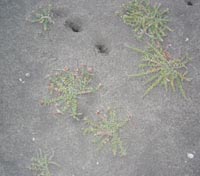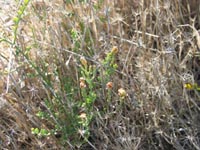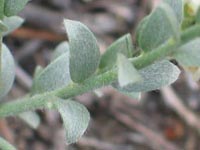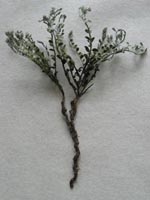Rosinweed
Back | Salinity Indicator Plants Home | Common name home | Scientific name home | Photo Gallery | Glossary
| Rosinweed photos | Family: Morning Glory (Convolvulaceae) |
| Scientific Name: | Cressa australis (syn. Cressa cretica var. australis) | 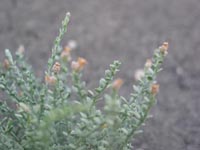 Rosinweed with flowering stems Photo: A J Brown | |||||
Status: | Native to all mainland States and the Northern Territory. | ||||||
Plant Description: | Perennial plant with a strong taproot. Stems, leaves and outer flower parts (sepals) with closely appressed (flattened) grey hairs. Leaves are ovate to lanceolate (lance-shaped) or elliptical, to 8 mm long and 3 mm wide with a pointed tip and alternately arranged on the stem. Flowers are in short heads at the ends of branches or solitary in the junction of leaf and stem. Petals are white and 4-6 mm long with its lobes (divided upper portion) shorter than or as long as the flower tube (lower fused portion). | ||||||
Habitat: | Found on saline swampy soils in north-west Victoria.
| ||||||
Comments: | Similar in general appearance to Creeping Brookweed but its leaves are generally more bluish-green to grey, rather than green and hairy rather than smooth. Also similar to Round-leaf Wilsonia, with which it shares the same family, but is generally more erect in growth habit. Although both have hairy leaves, stems and sepals, Rosinweed has leaves that are longer and oval or lance shaped and more spread apart on its stems. |
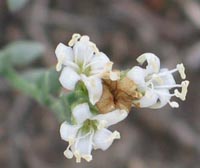 Rosinweed flowers Photo: A J Brown | 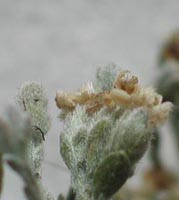 Rosinweed flowers showing hairy sepals and upper leaves Photo: A J Brown |
|
|
|
|

